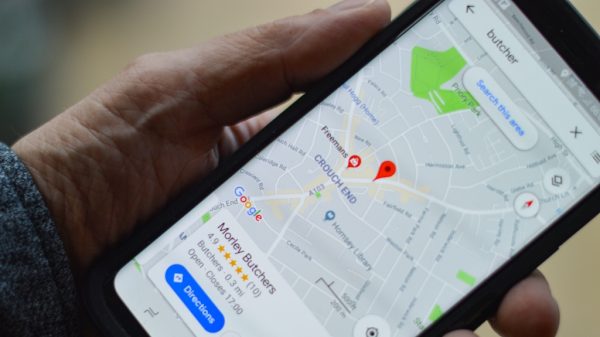
Photo Credit: emily_grace
Silly Technology?
“Jennifer in Louisville” left a comment on Bill’s “Silly Technology” post saying:
I personally find the individual domains for specific properties to be silly (i.e. you list 123 Main Street, so you register 123mainstreet(dot)com and create what essentially amounts to a brochure online). The new domain isn’t going to have immediate new exposure in the search engines. You could have just as easily done a featured spot on your main website, or placed a subpage behind your main site i.e. .
I was going to comment on Jennifer’s comment, but as I’m prone to do, the words fell out of my head in massive quantities and I realized, “this should be a post”….
The Problem
Single property web sites — a web site dedicated to one single listing — are all the rage. The idea being of course that you build a pretty web site extolling the virtues of the home. It’s so irresistible that buyers will flock to the listing, waving checks, fighting for the right to own this fine estate. Sellers love them. But are they effective?
Jennifer correctly points out that the new domain (which is almost always www.PropertyAddress.com) will not get immediate exposure to search engines. Bill mentions that it can get expensive, essentially buying “throw away” domain names. Hosting individual sites can also add up.
A Potential Solution
We build single-property web sites for most of our listings (more accurately, we use WordPress and build a “blogsite”). Here’s what we do to minimize the issues both Jennifer and Bill raise.
Domain names: Rather than go with the traditional 123MainSt.com URL, we purchase a more “generic” domain name. Subdivision and/or location names work well. For example, www.AvianoListing.com, www.TatumAndShea.com, and www.LeisureWorldProperty.com.
These names likely mean nothing to anyone outside the Phoenix area. But they certainly mean something to people in Phoenix — the most likely buyers for Phoenix listings.
The domains have good keywords in them. Think no one in Phoenix looking for a home in Leisure World (a large Master Planned community) Google’s “Leisure World Property”? Think again. And that particular listing blogsite comes up #1 and #2 in Google for that very search term.
In addition to keyword richness, these domains are re-usable. 123MainSt.com only works for one property. There are hundreds of homes in Leisure World and Aviano. Tatum & Shea is a major intersection in Phoenix with many homes in the area. We can keep these URLs and simply change out the text and photos when the next listing comes around. Meanwhile, the domain is aging. And like fine wine, Google likes aged domain names.
Hosting: True, hosting at a place like Godaddy is only $4/month. But if you have 20 listings, that swiftly turns into $80/month. There are hosting companies out there that will allow you to host numerous domains on the same plan. I use MediaTemple, and can host up to 100 domains for $20/month. BlueHost is another that allows multiple domains. There are others. You shouldn’t be buying hosting for individual sites.
Search Engine Exposure: It is not easy to get a new domain indexed in Google. Rarely will anyone in the outside world link to a single property site.
But you can.
Write a blog post announcing your single property site (example).
Post the listing photos to Flickr. Put them in a Flickr Set and include the URL to the single property site (example).
Make an interactive Google map with a link to the site (example).
Link to it from your static website.
Twitter it.
Heck, stick it in a presentation and upload that presentation to SlideShare.net (example). I didn’t include this site in my presentation on blogging just for the link. But less than an hour after uploading the presentation to SlideShare, Google picked up the link that was inside the presentation.
If your blog has just reasonable “authority” with Google, they will rapidly index your single property site. Even in blogs with lesser authority, adding these links that you can control will help get a brand new domain quickly indexed.
Does it Work?
To be perfectly honest, I can not directly contribute a sale to a single property web site. But exposure of any listing is critical. The Internet never closes. It is the single best way to expose a listing to the maximum number of potential buyers and investors.
Jay is the Broker / Owner of Thompson's Realty in Phoenix, Arizona. A self-professed "Man with a blogging problem" he can be found across the Interweb, including at the Phoenix Real Estate Guy blog where he opines on all things real estate and tosses out random musings.










































Bill Lublin
June 13, 2008 at 12:59 pm
You are amazing. I was writing in my new blog about how people in my computer help me in my business and share their expertise and BANG there’s Jay hooking a brother up with an in depth discussion of low cost property marketing that establishes a valid point of differnetiation and can be scaled for use in any size company.
I still think that buying single property sites is sill technology, but leveraging blogging, photos you’ve already taken of a listing, low cost domain names which grow richer the more you use them and increasing the SEM of your static web site by attaching multiple blogs to it – Now That’s an Idea! (Or set of ideas) Like our friend @GotBob says in his comment on my earlier post, if its free its for me! (Ok, I’ll go for inexpensive also!) Great Post 😉
(Only 199 comments more and a new record can be set)
😉
Jayson
June 13, 2008 at 1:11 pm
Nice post Jay and great argument. I agree that single property sites have a lot of potential.
Dave over at realestatebloglab dot com posted something months and months ago (maybe a year) about single property sites – he also mentioned that they are beneficial, and if I remember correctly, he pointed out a few success stories. On the surface they may seem pointless or “silly” but with a little work you could easily rank a single property site well.
You might even be able to get away with building a WordPress blog for free and using it as a single property website – maybe even a squidoo page. We host multiple domains at bluehost and namecheap and it’s incredibly easy and cheap.
As you mentioned though, it would be easy to use a semi-generic url for multiple properties and build the domain up overtime (as we all know, it all takes time). You could do a few quality real estate directory submissions for backlinks, rotate links to some of your single property sites from your main site/blogs homepage to help get it indexed frequently and write a few posts and articles about the neighborhood for some social media and article directory links.
Thanks Jay –
Teresa Boardman
June 13, 2008 at 1:23 pm
I use single property sites with a custom sign rider: http://www.123mainstreet.com. inexpensive to buy a domain name and do it. My clients love it, but like you I am not sure I can attribute a sale to it. There are many benefits though when it comes to viral marketing. Been doing it that way for 3.5 years, plan to continue
Erion Shehaj
June 13, 2008 at 1:24 pm
Ever since I read about single property websites on Bloodhound, I have had some of the same concerns about them that Jennifer had. I honestly don’t see what the added value of a 123MainSt.com website is over a Postlets Premium Website ($3) especially when you consider the fact that Postlets sites come with built-in syndication. Always thought that single property websites help the agent more than the client since the listing is usually sold by the time the site gets any search engine traction.
That being said, I think your idea of more general domain names is just brilliant and green (recycling) 😉
Doug Quance
June 13, 2008 at 2:23 pm
Single property websites shouldn’t be thought of as places where search engines will find your listing. They should be thought of a destinations where a full breadth of information about a property can be found.
I can remember a buyer who saw my single property sign rider at one of my listings… who then viewed the site over and over prior to our appointment to show. Once inside, she confirmed her love for the home and paid top dollar for it.
It’s just part of a strategy… certainly not the “be all” and “end all”.
Jayson
June 13, 2008 at 2:28 pm
Good point. It’s just one more thing that you can offer your client and the home buyer….would be nice if it showed up in the search engine results though 😉
Jennifer in Louisville
June 13, 2008 at 2:59 pm
I ran into the same issue as you with wanting to write a book regarding the topic – but I limited it to just 1 paragraph figuring it would stimulate some discussion. 🙂
I agree absolutely with the concept of the “neighborhood” (or a subdivision) website. I do that myself as well. 🙂 And if you want to “spotlight” a particular listing, you can either make a post on the site, or stick it on a back page like www(dot)neighborhoodname(dot)com/123MainStreet. It gets found in the search engines quite easily.
Instead of promoting ONE property with ONE domain. And the most important part:
You promote the entire neighborhood by including things like the subdivision newsletters online, board of directors names/addresses/phone numbers, a community calendar for Yard Sales, etc and become in the minds of everyone as THE expert for the area.
On one subdivision, it became such a hit, that I even received permission from the homeowners association to place a fairly large PERMANENT free standing sign in the median of the entrance as you come into the neighborhood that has the website site address.
Jay Thompson
June 13, 2008 at 3:10 pm
Well how cool is that! I think the HOA boards here would rather poke a stick in their eye than allow that. (which is silly. It could do great things for the neighborhood/HOA)
Dru Bloomfield
June 13, 2008 at 3:45 pm
I really like the idea of single property sites and plan to continue using them for listings. Sellers love them and they have a shelf life that lasts longer than the listing period. The vendor I use doesn’t charge for sold listings, so I can keep them around indefinitely, for the price of the domain, which runs about $7-8/ year. All single property sites point back to me, my web site, my blog, which in turn points to my other listings. For me, it’s a solution that works.
Eric Blackwell
June 13, 2008 at 3:58 pm
Hey Jay;
First off, very well thought out and explained post. Jennifer (and her husband) are part of my blogging group here in Louisville (yeah…I am proud of that). Glad to see that her concerns raised a really worthwhile subject.
I think many people could learn from how you do hosting. I do it (slightly) differently with a VPS (virtual private server) from 1and1…unlimited domains for around $30 per month…works well for me. They also have hosting ala BlueHost, etc.
Thanks again and have a great weekend!
Eric
Dale Chumbley
June 13, 2008 at 4:52 pm
Jay, Excellent post! Love these ideas and you have my brain twirling. I appreciate the thoughts and the examples. Looking forward to seeing how I could apply some of this to my marketplace.
John Lockwood
June 13, 2008 at 5:47 pm
If you have multi-domain hosting, you can pull it off for about nine dollars per year for the domain. If you use vFlyer, they allow an optional upgrade from their “flyers” (which more and more are turning to multi-page web sites, at least as they appear on their site), for about $10.00 per year.
The win I think is if you put the rider on the sign.
Does it work? Well, probably as well as print advertising ever did, which is not much. But for $10 for the domain and $5 for the rider? What the heck. I think it’s a nice touch.
Mariana Wagner
June 13, 2008 at 6:47 pm
I like the subdomain option. I have a little neighborhood that I “farm” and already have a great site … adding the address as the subdomain is a great idea.
Barry Cunningham
June 13, 2008 at 7:09 pm
Ok…no pitchforks…have a question. As Phoenix Real Estate Guy is a well ranked blog with a good deal of traffic I presume…would it not be just as easy to blog a post about a neighborhood or property and use the existing strength of your current blog?
We launched a new real estate blog from scratch, have n’t had the first google update yet, and already for neighborhoods and such we are showing up for the keywords we want.
If You Put up a post on Phoenix Real Estate Guy and say the post was titled:
“Tatum And Shea Homes For Sale” or Tatum And Shea Real Estate” or something like that..and you seo the post correctly, would that not just do the trick? Why do twice the work?
We blog about neighborhoods and such and within hours, if not days, we start showing up and our new re blog is just a baby.
Not throwing rocks (hate that I have to preface that)…just asking a legitimate question.
Susan
June 13, 2008 at 7:29 pm
I think the neighborhood sites are great and if you had one of those and the listing falls into that particular neighborhood, that is perfect. I actually have a #1 site which allows me the option of giving every listing on there its own domain name. Its a nice selling point on the listing presentation. However, without that it doesn’t seem worthwhile to me to purchase a domain name for a listing and/or create its own site. It would take a while to rank and I would be hoping to sell the home way before that. I have to agree with Barry, as I’ve often had the same thought that blogging about a listing and linking to it on a page on your site seems as if it would be just as effective or more as far as getting exposure fast.
Jay Thompson
June 13, 2008 at 7:36 pm
Barry –
Perfectly reasonable (and good) question…
First, I usually do write a post on Phoenix RE Guy pretty much just as you say. And yes, it’s usually indexed in minutes and an ranked very well. Those posts also link back to the single property blog, which usually results in Google indexing the new site very quickly.
Primarily, I build the dedicated single property site so that I can put additional info on it. Things like dozens of pics, maps, links to school districts, PDFs of the various listings, photo slide shows, and a virtual tour. I could put all that in a single post on TPREG, but it would be lengthy, and horrifically boring. Having multiple pages on a dedicated blog is a much better presentation (I think) then trying to jam all that into one single post. The blogsite is a little more “impressive” to sellers as a complete site, and it can provide a much easier way for potential buyers to get info about the property and neighborhood.
The URL goes on a sign rider as well. I suppose I could just redirect that domain name to the post on TPREG. But by separating them, often both the post on TPREG *and* the single property blog will show up on the same search page, giving us twice the chance of someone clicking on it.
I won’t say the work involved in setting up a single property blogsite is insignificant. But I use the same theme and general layout for each one, and I’m relatively adept at using WordPress, so the workload isn’t too bad. All the theme customizations carry over from one to the other, so it’s pretty much a matter of uploading the photos, writing the copy and changing links.
Make sense?
Jay Thompson
June 13, 2008 at 7:43 pm
Another factor is I have a bit of a problem with just straight “blogging listings”. I wrote a post on the HomeGain corporate blog covering some of the pro’s and con’s of blogging listings.
Should Real Estate Agents Blog Listings?
Just my take…
Melina Tomson
June 13, 2008 at 10:03 pm
I use blogger for my blog, as well as AR, and I just did two custom blogsites for properties. $10 for each custom domain name pointed to the blog and about 4 hours worth of work uploading pics and creating content.
I put that domain on every flier and link to it everywhere. They’ve gotten great hits so far and people have called me asking questions.
I think well worth it.
I also have gotten a lot of links to my blog from it as well as my website. Win-win so far for me.
Melina Tomson
June 13, 2008 at 10:04 pm
OOPS…I forgot to add that I put minimal information on the flyerbox fliers, but the property website address is nice and large. I want people to go there for information.
Paula Henry
June 13, 2008 at 11:51 pm
This is great info and a wonderful discussion. I use VFlyer for single property sites; It’s easy and allows me to add additional links about the area; schools, government, parks, etc.
The downside is, once the property has sold, you have no use for the domain, so your work does not live on. A better option would be a blog, such as Jay does, or a page within your blog.
I have been using the address, which the client loves. I have also bought several specific domain names for both neighborhoods and cities, i.e., IndianapolisHomesandCondos.com, AvonIndianaHomes.com.
Which is better – a separate blog or a page within my blog. What about pointing a domain name to a page within my blog? I have heard Google does not like to see several domain names point to a blog. Thoughts?
Jay – couldn’t you keep more than one property on a blogsite? If you have four homes listed in Leisure World, couldn’t you have them all on the one blogsite?
Jay Thompson
June 14, 2008 at 12:41 am
“Jay – couldn’t you keep more than one property on a blogsite? If you have four homes listed in Leisure World, couldn’t you have them all on the one blogsite?”
You betcha! I’d probably just change the first page to have (for example) for short posts, one for each listing that pointed deeper into the site for additional info.
“What about pointing a domain name to a page within my blog? I have heard Google does not like to see several domain names point to a blog. Thoughts?”
If they are pointed correctly (with 301 redirects) Google won’t care. The problem is, that you won’t ever get any indexing or ranking on the URL being pointed. It’s basically invisible to Google.
John Sabia
June 14, 2008 at 7:56 am
Great post – excellent idea bout generic url names. You gave great examples. Thanks.
ines
June 14, 2008 at 9:11 pm
Wow Jay – I have to tell you that I have been trying to figure out how to make these sites more effective and you did it! I’ve done it with only one site and used a keyword rich domain, but never thought of making wordpress blogs interchangeable…..especially when you farm certain subdivisions. The aging domain is genius. THANK YOU!! that should cost me a couple of hours less of sleep per night until I get them right.
Jay McGillicuddy
June 15, 2008 at 9:58 am
We took your advice months ago and it has worked very well for us too. We post about the new listing on our outside blog after the listing has been uploaded to the MLS and all the IDX sites have picked them up and then blog about it. This way the newest blog post may get number 1 spot by an address google search and a few days later the blogsite by address moves right up the google ranks. We also have found that by putting the MLS number in the title has helped also as peopl ewill search by MLS number as well.
Bill Gassett
June 29, 2008 at 7:58 pm
If your website or blog has page rank and has good placement in the serps why would you spend exta money to create a stand alone site that is not going to be readily indexed. It would make much more sense to promote the listing in area that would receive a high level of traffic.
Susan
June 29, 2008 at 8:58 pm
Great brainstorming post. I really like the idea of having a community site and putting various listings on that site while the domain continues to age.
Kay Baker Wilmington NC Real Estate
August 10, 2008 at 3:33 pm
Yes, I think you are exactly right about the single property sites. I am now using SPS and they look great , sellers love them, but you do not get any recognition from the search engines. I think the idea of using wordpress for SPS might really be the best idea.
Michael LaPeter
April 25, 2009 at 12:58 pm
Good post Jay, that’s a great idea about using resuable domain names instead of just ‘123mainstreet’ etc. I’ve been working on developing my own web app for single property websites, and I think I’ll start suggesting people go with those reusable domains instead.
Pingback: 1and1 Vps | mesotheliomacare.xyz